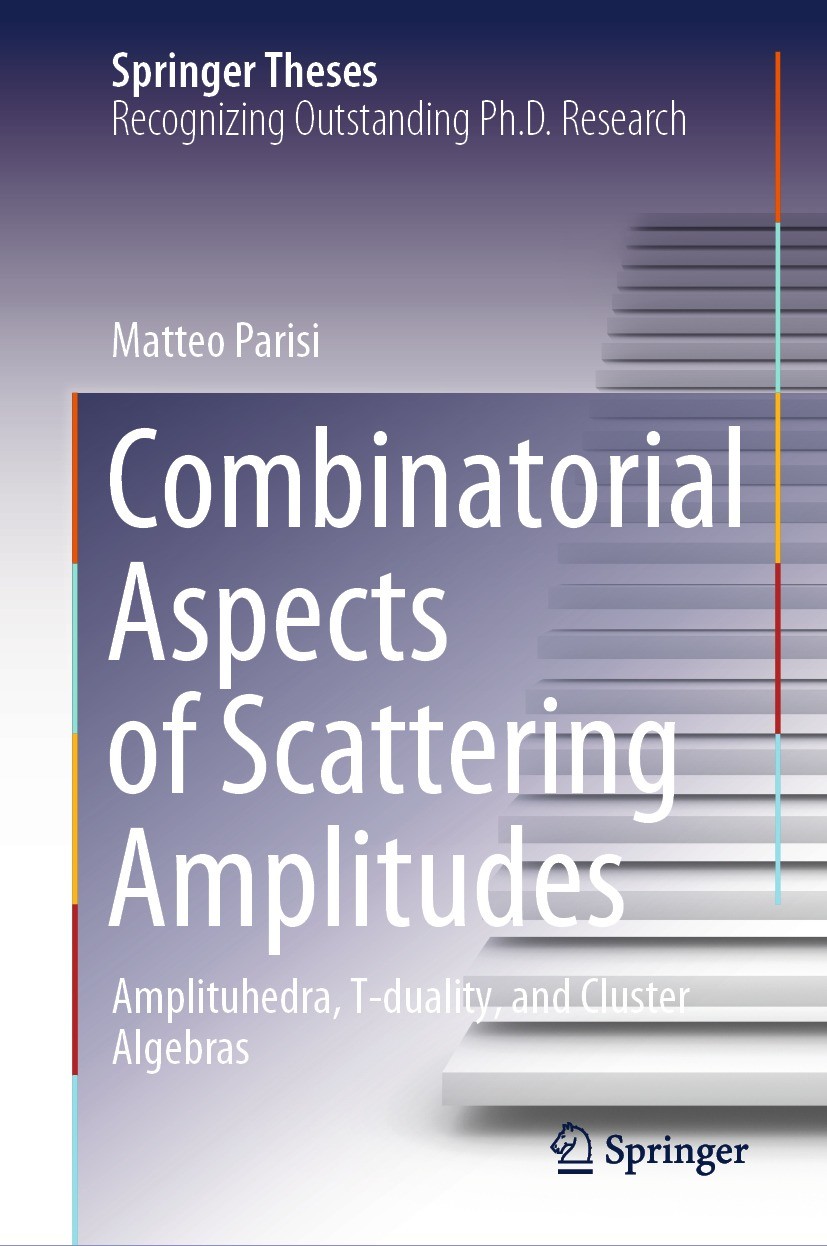| 书目名称 | Combinatorial Aspects of Scattering Amplitudes |
| 副标题 | Amplituhedra, T-dual |
| 编辑 | Matteo Parisi |
| 视频video | http://file.papertrans.cn/230/229893/229893.mp4 |
| 概述 | Connects Amplituhedra with the ever-expanding fields of cluster algebras and tropical geometry.Addresses both algebraic combinatorists and high energy physicists.Combines extensive introductions on bo |
| 丛书名称 | Springer Theses |
| 图书封面 |  |
| 描述 | .This book is a significant contribution within and across High Energy Physics and Algebraic Combinatorics. It is at the forefront of the recent paradigm shift according to which physical observables emerge from geometry and combinatorics. It is the first book on the amplituhedron, which encodes the scattering amplitudes of N=4 Yang-Mills theory, a cousin of the theory of strong interactions of quarks and gluons. Amplituhedra are generalizations of polytopes inside the Grassmannian, and they build on the theory of total positivity and oriented matroids. This book unveils many new combinatorial structures of the amplituhedron and introduces a new important related object, the momentum amplituhedron. Moreover, the work pioneers the connection between amplituhedra, cluster algebras and tropical geometry. Combining extensive introductions with proofs and examples, it is a valuable resource for researchers investigating geometrical structures emerging from physics for some time to come.. |
| 出版日期 | Book 2023 |
| 关键词 | Amplituhedron; On-shell Methods; Landau Singularities; Positive Tropical Grassmannian; Matroids and Posi |
| 版次 | 1 |
| doi | https://doi.org/10.1007/978-3-031-41069-7 |
| isbn_softcover | 978-3-031-41071-0 |
| isbn_ebook | 978-3-031-41069-7Series ISSN 2190-5053 Series E-ISSN 2190-5061 |
| issn_series | 2190-5053 |
| copyright | The Editor(s) (if applicable) and The Author(s), under exclusive license to Springer Nature Switzerl |
 |Archiver|手机版|小黑屋|
派博传思国际
( 京公网安备110108008328)
GMT+8, 2025-11-13 02:16
|Archiver|手机版|小黑屋|
派博传思国际
( 京公网安备110108008328)
GMT+8, 2025-11-13 02:16


